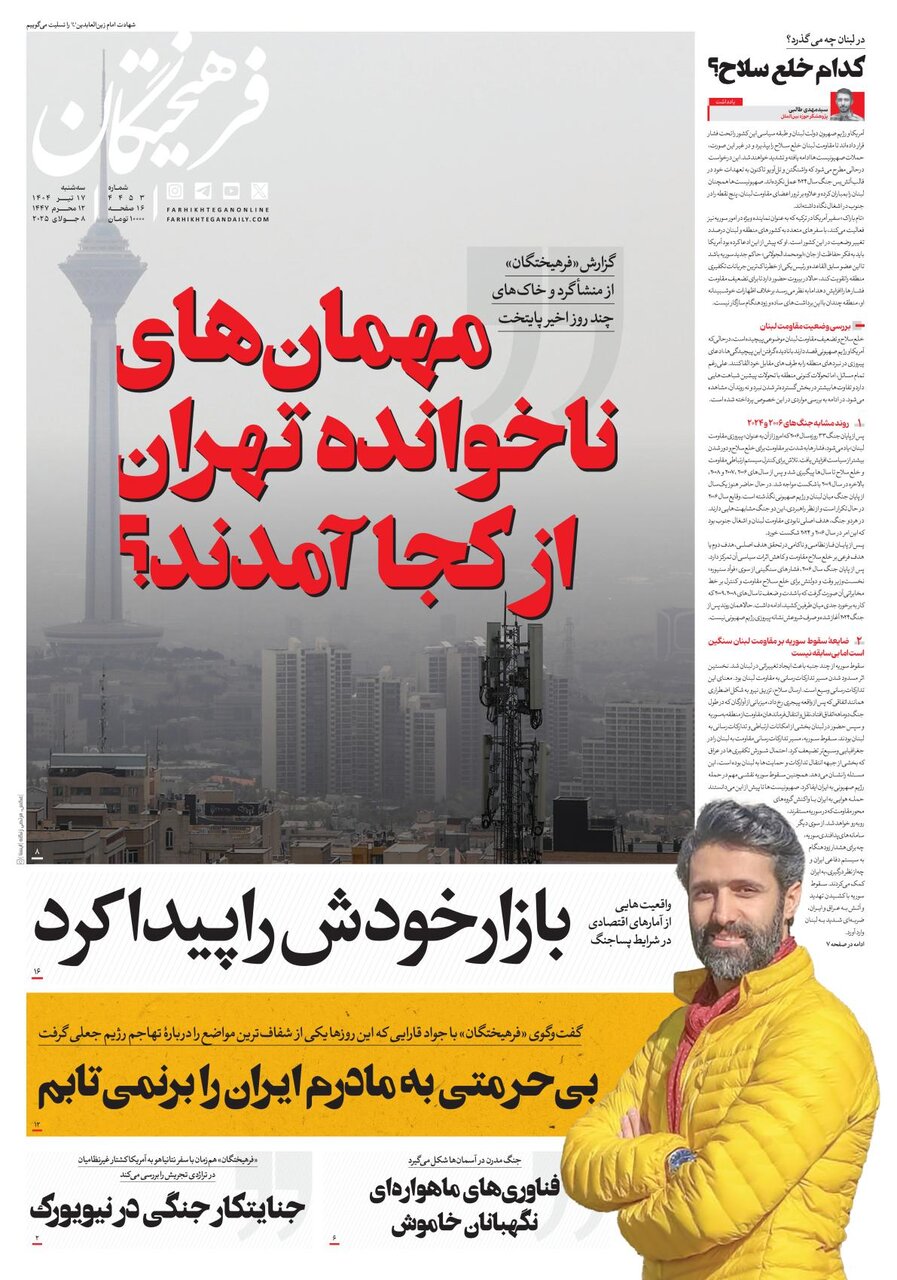The Revolutionary Leader's strategy reinforces unity

TEHRAN - In an analysis, Farhikhtegan highlighted the failure of Israel’s attempt to create a rift between the Iranian people and the ruling system.
The publication noted that the Israelis had designed a comprehensive plan: to launch attacks that would ignite widespread protests, exploit public discontent, and rally people to their cause. They assumed that the aggression would deepen the divide between the people and the establishment. However, the result was quite the opposite. When the aggression began, it only served to strengthen empathy and unity among the populace. Alongside this setback for the Zionists, the Revolutionary Leader’s presence at the Ashura ritual in the Imam Khomeini Hosseiniyeh sent a calculated and resonant message to the socio-political climate.
His participation played a key role in healing internal divisions that had recently surfaced. With these disputes now resolved, the nation stands more unified than ever. This national solidarity—along with the opportunities arising from it—will be crucial in safeguarding this victory and reinforcing the country's social capital.
Jam-e-Jam: Love of Iran
In an article, Jam-e-Jam discussed the presence of the Leader of the Islamic Revolution in the Ashura night mourning ceremony and wrote: The presence of the Leader of the Revolution in the Ashura night ceremony, in a situation where the Zionist regime and some American officials had made threats against him, was a strategic and multifaceted action. This presence was considered not only a religious event but also a political, emotional, and symbolic action to consolidate national solidarity and neutralize the enemy's psychological operations.
This strategic presence, amidst the enemy's military, security, and psychological threats, had profound effects on Iranian society and regional equations. From a domestic view, this action helped strengthen social cohesion and the spirit of resistance, especially in a situation when the country was rebuilding the damages resulted from the war and confronting the enemy's psychological operations.
This action sent a clear message to the people at home and abroad that Iran will not surrender to pressures and threats. Domestic and international reactions, from the message of the president and foreign minister to the analysis of the global media, indicate the importance of this event in redefining Iran's position in regional and global equations.
Sobh-e-No: The enemy wants to turn defeat into victory in media
In an interview with Sobh-e-No, university professor Saeed Abdolmaleki addressed ongoing efforts to whitewash the actions of the Zionist regime. He stated that the recent war was accompanied by attempts from the United States to broker a ceasefire—an initiative that, according to Abdolmaleki, was in fact imposed on both America and Israel due to Iran’s demonstration of power and the near-collapse of the Israeli front.
He argued that the U.S. intervened primarily to rescue Israel from an impending failure, but ultimately, what he described as “the arrogance front led by the West” was overcome by the Islamic Revolution. Abdolmaleki outlined a multi-stage plan that he said was intended to overthrow the Iranian system: beginning with the assassination of key elites, followed by attacks on nuclear and missile infrastructure, and then a societal polarization campaign aimed at triggering internal collapse—akin to the strategy used in Syria. He alleged that the final objective was to divide Iran, a goal that was ultimately not achieved. Now, following their military failure, Abdolmaleki contends that opponents are turning to the media battlefield—spreading false and distorted narratives on virtual platforms in an attempt to rewrite the outcome and obscure the reality of their defeat.
Arman-e-Melli: A place for convergence or confrontation?
In a note, Arman-e-Melli dealt with the Iranian President’s presence at the ECO summit in Baku and wrote: In the days when order in Eurasia and the Middle East has undergone transformative changes, this trip had multi-layered messages for regional and trans-regional actors. On the one side, Pezeshkian's official visit to Baku was of political importance, and on the other, the location of the meeting (Khan-Kandi) itself carried a special geopolitical message that strengthened the Tehran-Baku alignment and sent a clear message to external powers that they cannot count on the differences between Iran and Azerbaijan, some of which are natural, and lead Azerbaijan towards hostility towards Iran. Pezeshkian's presence in this city also showed that Iran no longer intends to be a mere observer of the conflicts in the South Caucasus, but rather, by accepting the new geopolitical realities, has entered a phase of re-adjusting relations with Baku. Aliyev's official welcome of the Iranian President showed that the problems between the two countries are not going to become a dead end, so the extra-regional powers should no longer count on an increase in the differences between Iran and Azerbaijan.
Leave a Comment